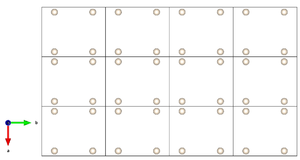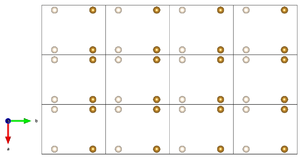Derivative structure
From Online Dictionary of Crystallography
Revision as of 08:46, 17 February 2019 by MassimoNespolo (talk | contribs) (Created page with "<font color="blue">Structure dérivative</font> (''Fr''). <font color="black">Struttura derivativa</font> (''It''). A '''derivative structure''' is a crystal structure S’...")
Revision as of 08:46, 17 February 2019 by MassimoNespolo (talk | contribs) (Created page with "<font color="blue">Structure dérivative</font> (''Fr''). <font color="black">Struttura derivativa</font> (''It''). A '''derivative structure''' is a crystal structure S’...")
Structure dérivative (Fr). Struttura derivativa (It).
A derivative structure is a crystal structure S’ obtained from another crystal structure (called a basic structure) S under the following conditions:
- the space group G’ of S is a subgroup of the space group G of S;
- the translation lattice is preserved, i.e. the translation subgroup T(G’) of S’ is the same as the translation subgroup T(G) of S;
- as a consequence, the point group of P’ of S’ is a subgroup of the point group P of S (i.e. S’ belong to a lower-symmetric geometric crystal class with respect to S);
- at least one of the Wyckoff positions of S is split into two or more independent Wyckoff positions of S’ and the corresponding crystallographic orbits are occupied by chemically different atoms.
Notes
The definition of derivative structure was introduced by Martin J. Buerger: Journal of Chemical Physics 15 (1947) 1-16.

